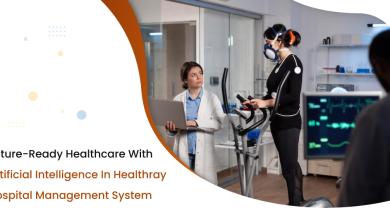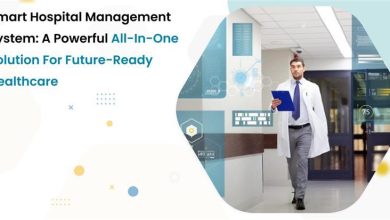
In the next five years, the world must triple its renewable energy capacity to meet the climate goals set out by the Paris Agreement. According to the International Renewable Energy Agency (IRENA), that’s not a lofty ambition, it’s a survival imperative. Behind this global transformation are scientists and engineers whose work, while often unseen, shapes the future of how we live, move, and breathe.
Across the lab floors of biotech facilities, in the decision rooms of multibillion-dollar companies, and now, in the innovation corridors of clean energy, Abantika has built a career not just on solving technical problems, but on solving the right problems. Problems that matter to people, to public health, and to the planet.
Her story begins not with fame or accolades, but with quiet resolve. Years ago in Boston, she delivered her first major presentation as a young automation engineer. The proposal focused on streamlining workflows and cutting operational waste. Within six months, her recommendations were saving her company half a million dollars a year. It was an early glimpse of the precision and clarity that would come to define her work.
But her vision didn’t stop at cost efficiency. Today, Abantika is a leader in the Life Sciences and Operations practice at one of the world’s foremost consulting firms. Her portfolio spans global pharmaceutical operations, industrial digitalization, and sustainability-focused projects. And while her client savings regularly reach into the tens or hundreds of millions, the real currency of her work is impact, on people’s health, communities’ resilience, and the planet’s future.
Engineering Impact: From Pharmaceutical Floors to Climate Innovation
In her life sciences work, Abantika helped drive a $110 million cost transformation for a global MedTech firm, uniting cross-functional teams to streamline systems and eliminate waste. At two critical pharmaceutical sites, she orchestrated due diligence and value capture processes that yielded more than $25 million in savings. By revamping lean production and quality controls, she helped a major biopharma client boost its annual output by 40%, a win not just for efficiency, but for patient access to critical medications.
Yet numbers alone don’t tell the full story.
“Every plant we optimize, every system we digitize, means fewer delays in drug production, fewer interruptions to patient care,” Abantika notes. “In life sciences, operational efficiency is public health.”
That grounding in real-world consequences is what ultimately led her to shift her focus toward renewable energy and sustainable fuels, industries where technical excellence can directly combat the climate crisis.
Renewable Energy, Real-World Results
Abantika’s recent work reads like a roadmap to a low-carbon future. She helped model a blue hydrogen supply network to support a $2.5 billion clean energy investment by a Fortune 100 company. The result? A strategy that could unlock $500 million in annual revenue while significantly reducing emissions from industrial processes.
In California, she contributed to the transformation of a municipal water treatment facility, implementing an advanced waste digestion technology that tripled the plant’s processing capacity and saved over $1 million in operating costs. This wasn’t just an upgrade, it was a critical step in managing urban waste sustainably and protecting public water quality.
She also played a key role in securing public funding for low-carbon fuel initiatives, helping the Michigan Public Service Commission win a $5 million grant and supporting a $1.5 million biomethane effort in Southern California. These are not abstract contributions, they are the kinds of interventions that make clean energy not just possible, but practical.
Building a Foundation in Automation and Engineering Excellence
Before her clean-tech pivot, Abantika honed her skills at some of the most sophisticated biotech and pharmaceutical companies in the U.S. At Amgen Inc. and Sanofi Genzyme, she led automation efforts that delivered significant savings and reliability improvements.
She implemented a long-range maintenance optimization program that cut $4 million in annual costs. Her leadership of a $10 million flexible manufacturing initiative reduced run rates in a 24/7 biotech facility. And across more than 30 major automation projects, representing over $5 million in capital scope, she brought strategic rigor and deep technical acumen to every challenge.
One of her standout achievements was reducing equipment downtime by 40% through preventive maintenance redesigns. That increase in reliability had a direct impact on product yield, at one site, she pushed output up by 20%, setting new benchmarks for biotech manufacturing.
“Automation isn’t just about machines,” she says. “It’s about unlocking human potential. When you remove inefficiencies, you give teams the bandwidth to innovate.”
A Mentor and Mission-Driven Leader
Today, Abantika is more than a technical leader, she is a mentor, coach, and advocate for the next generation of engineers. Within her organization, she leads capability-building workshops, helps onboard new consultants, and designs skill tracks for early-career professionals.
Her leadership style blends rigor with empathy. She believes that sustainable change comes not just from great systems, but from empowered people. That’s why she champions initiatives that promote inclusivity in engineering and support for women in STEM.
As she looks ahead, Abantika is exploring pathways to deepen her work in climate and energy, whether by launching a clean energy venture of her own or taking on transformative roles within forward-thinking organizations. With a Master of Science in Computer Engineering from Boston University and a Bachelor of Technology from West Bengal University of Technology, she brings both the technical depth and strategic breadth needed to lead at the highest levels.
Looking Forward: Scaling Sustainability
Abantika knows that solving the climate crisis won’t come from one initiative or even one industry. It will require systems thinking, interdisciplinary collaboration, and relentless innovation.
“The scale of the challenge is daunting,” she says. “But the scale of the opportunity is even greater.”
Her work, spanning biopharma efficiency, hydrogen infrastructure, municipal sustainability, and low-carbon fuels, offers a glimpse into what that future can look like. Cleaner. Smarter. More equitable.
And perhaps most importantly, engineered with purpose.
By anchoring her career in both technical excellence and social responsibility, Abantika Ghosh is helping design the systems that will carry communities through the climate transition, and beyond. Her story is not just one of professional achievement. It’s a testament to what engineering can become when driven by conscience.



